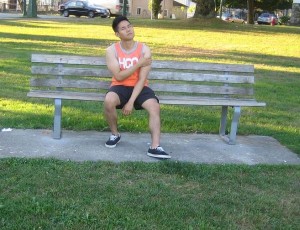When an individual sustains a rotator cuff injury, there is a decline in the physiological function of the shoulder. If the condition is left untreated, it can lead to inability to carry out daily activities or playing sports.
Once the pain persists, guarding behavior is common where the shoulder joint is shielded and movements are reduced. In most cases, there might be a psychological aspect if the injury continues to disrupt with the ability of the individual to engage in regular fitness activities. The systematic process of healing begins with preserving or increasing the range of motion of the shoulder and then followed by improving the aerobic fitness and eventually establishing strength and power.
Inflammation
Rotator cuff injuries can be caused by an accident or due to chronic overuse. Once the body tries to heal the damaged rotator cuff, the initial stage of healing is inflammation that can last for a day up to a week.

The first aid for this musculoskeletal injury is the RICE method (rest, ice, compression and elevation). If you want to learn more this essential first aid measure, click here. The objective of the treatment is to manage the inflammation so that the swelling will not limit the mobility of the joint. The application of ice can minimize the swelling and pain as well as promote healing.
Remodeling
Once the pain subsides and the range of motion of the joint is restored, it is time to start to strengthen the shoulder joint. Depending on the harshness of the rotator cuff injury, the process can take up to 12 months. The initial strengthening can include gentle strength training with the help of small dumbbells. Just remember that these activities are intended to restore the stability and balance of shoulder joint.
Proliferation
As the body heals itself, the swelling can continue and scar tissue will develop. After a few weeks, it is vital to boost the circulation and flow of blood to the affected area. Stretching the shoulder joint in various angles will release the tissue and allows increased flow of blood.
Remember that the stretching must not cause any pain but can be carried out to the point of slight discomfort. Engaging in regular cardiovascular activities with limited involvement of the shoulder can also help improve the overall circulation and promote healing.
Stable shoulder
When restoring the strength and power to the shoulder, it is vital to establish a strong core. The stability of the shoulder depends on the core strength of the individual, thus it is best to include abdominal and spine stabilization exercises.
When to consult a doctor
After the initial injury, take note that there is numbness, tingling or loss of sensation in the shoulder, hand or arm that would require assessment by a doctor. A doctor should be consulted if the pain persists within a few days. During the rehabilitation period, a doctor must be consulted if the healing progress stopped or re-injury occurs.
